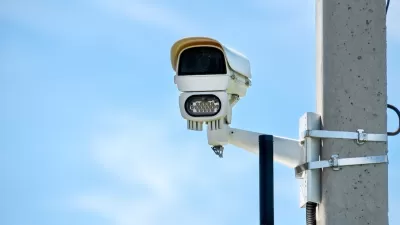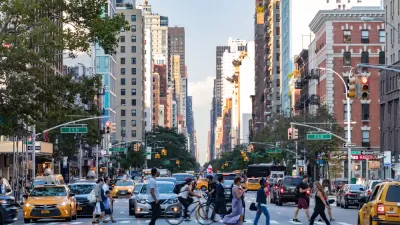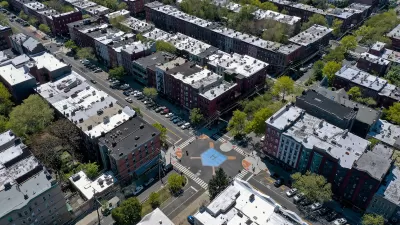New York Governor Andrew M. Cuomo signed a bill this month reducing the speed limit in New York City. But what will it take to get people to actually slow down, especially when speeding is an acceptable social norm?
Tom Vanderbilt follows on New York State's adoption of a bill that lowers the default speed limit in New York City to 25 miles per hour by asking a question that gets at "a sterner challenge to the new limit." That is, how will the city convince drivers to obey the new speed limit? "What, after all, is so dangerous about driving 5 or 10 m.p.h. above the new speed, a difference the driver may hardly register?"
After stating that there are only two ways to lower the speeds of drivers (speed bumps and speed cameras), Vanderbilt makes an argument that a far more powerful force must be addressed before speeds will stop killing people: social norms. Stated simply, "New York City needs to look like a city where driving above 25 m.p.h. seems not simply dangerous, but inappropriate."
FULL STORY: A Psychological Speed Limit

Trump Administration Could Effectively End Housing Voucher Program
Federal officials are eyeing major cuts to the Section 8 program that helps millions of low-income households pay rent.

Planetizen Federal Action Tracker
A weekly monitor of how Trump’s orders and actions are impacting planners and planning in America.

Ken Jennings Launches Transit Web Series
The Jeopardy champ wants you to ride public transit.

Crime Continues to Drop on Philly, San Francisco Transit Systems
SEPTA and BART both saw significant declines in violent crime in the first quarter of 2025.

How South LA Green Spaces Power Community Health and Hope
Green spaces like South L.A. Wetlands Park are helping South Los Angeles residents promote healthy lifestyles, build community, and advocate for improvements that reflect local needs in historically underserved neighborhoods.

Sacramento Plans ‘Quick-Build’ Road Safety Projects
The city wants to accelerate small-scale safety improvements that use low-cost equipment to make an impact at dangerous intersections.
Urban Design for Planners 1: Software Tools
This six-course series explores essential urban design concepts using open source software and equips planners with the tools they need to participate fully in the urban design process.
Planning for Universal Design
Learn the tools for implementing Universal Design in planning regulations.
Heyer Gruel & Associates PA
Ada County Highway District
Institute for Housing and Urban Development Studies (IHS)
City of Grandview
Harvard GSD Executive Education
Toledo-Lucas County Plan Commissions
Salt Lake City
NYU Wagner Graduate School of Public Service





























